Tasmania’s white raptor endangered in Tarkine
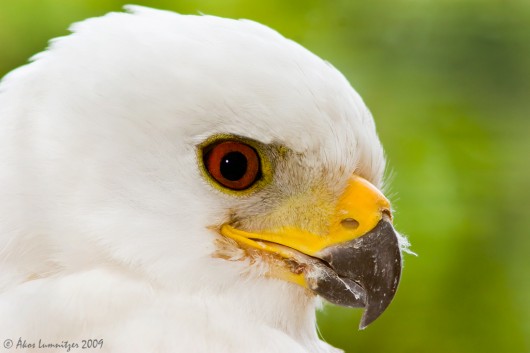 Grey Goshawk (white morph) (Accipiter novaehollandiae)
[Photo courtesy of Ákos Lumnitzer with permission, ^http://www.amatteroflight.com/]
Click photo to enlarge.
Grey Goshawk (white morph) (Accipiter novaehollandiae)
[Photo courtesy of Ákos Lumnitzer with permission, ^http://www.amatteroflight.com/]
Click photo to enlarge.
 Play call of Grey Goshawk
Source: ^http://www.aviceda.org/audio/?p=248
Play call of Grey Goshawk
Source: ^http://www.aviceda.org/audio/?p=248
The white form of the Grey Goshawk is the only pure white raptor in the world. In Tasmania, Grey Goshawks, are listed as endangered species, with their nesting habitat affected by logging. It favours tall closed forests including rainforests and particularly those of the large wild tracts of tall forest across the Tarkine.
Grey Goshawks form permanent pairs that defend a home territory year round. Both sexes construct a stick nest lined with leaves high in a tree fork, and often re-use the same nest. While the female does most of the incubation, the male relieves her when she needs to feed, and catches most of the food for the young, which the female tears up for them to eat.
.
[Source: ^http://birdsinbackyards.net/species/Accipiter-novaehollandiae].
“The Tarkine rations nothing.
It gives its all in a fury of excess that is raw coast, mountain ranges,
dark gashes of gullies and the benediction of unbroken tracts of old-man rainforest.”
.
~ ‘Tarkine‘ (photographic book), 2010, edited by Ralph Ashton, inspired by Robert Purves AM, published by Allen & Unwin. ^http://www.allenandunwin.com/default.aspx?page=94&book=9781742372846.
Bordered by the Arthur River in the north, the Pieman River in the south, the Murchison Highway in the east, and the ocean to the west, Tasmania’s wild Tarkine is a magnificent wilderness sanctuary but threatened by ongoing industrial interests from mining and logging, as well as from road making, off-road vehicles, poaching, cattle and exploitative tourism.
Scott Jordan from the Tarkine National Coalition says:
“We see it as an area containing great wilderness values, a lot of natural – as well as cultural – values. We see it as an area that really needs to be protected and enjoyed.”
 Volunteer Tasmanian Environmentalist, Scott Jordan
Volunteer Tasmanian Environmentalist, Scott Jordan
The Tarkine National Coalition wants to see it made a national park, and protected under a World Heritage listing, before it is ruined and goes the same way as Mount Lyell.
Visit: The Tarkine Coalition’s website: ^http://www.tarkine.org/
.
With Tasmania’s alternating Labor and Liberal governments still hell bent on carving up Tasmania’s remaining wilderness, they have divvied up more than 50 mining exploration licences in the Tarkine.
There are some ten proposed mines set to dig up the Tarkine!
.
Whereas Alan Daley from industrial miner Tasmania Magnesite has plans to develop an open cut mine. He is reticent about identifying the Tarkine…“I’m not sure what the Tarkine is. To my knowledge there isn’t a boundary yet defined as the Tarkine.” I understand the marketing value.”
Tasmania Magnesite (Beacon Hill Resources) wants to establish an open cut magnesite mine within the Keith River area, Shree Minerals wants an open cut iron ore mine at Nelson Bay River, and Venture Minerals are planning open cut mining for tin and tungsten in the rainforest at Mount Lindsay.
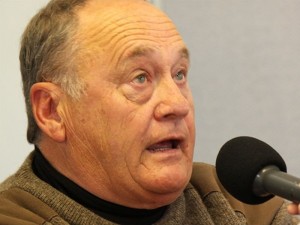 Industrial Miner, Alan Daley
Industrial Miner, Alan Daley. [Source: ‘A week in the west‘: the Tarkine’, by Eliza Wood, ABC Rural, 20111027, ^http://www.abc.net.au/rural/content/2011/s3349649.htm]
.
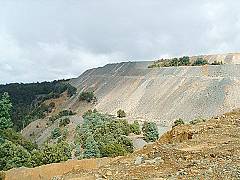 Savage River Mine
This is on the northern boundary of the Tarkine
Savage River Mine
This is on the northern boundary of the Tarkine
.
Editor:
It has become apparent to this observer, that many of those with a broad commitment to protecting Nature are comparatively young. Whereas those ‘baby-boomer‘ industrial executives and old school Labor/Liberal politicians seem narrower in outlook, committed to pursuing 20th Century exploitation as if such business-as-usual plundering of Nature is limitless. May be I’m generalising.
.
Tim Flannery:
“One of the greatest tragedies of Tasmania is that its European inhabitants have always wanted their island home to be something it is not – a little England perhaps, or the world’s largest sheep paddock or even, in later years, the Ruhr of the South (which was to be powered by Tasmania’s out-of-control hydro schemes). All such dreams have failed, but nevertheless their pursuit has cost the present generation dearly.” (Tarkine, 2010, p.4-5).
.
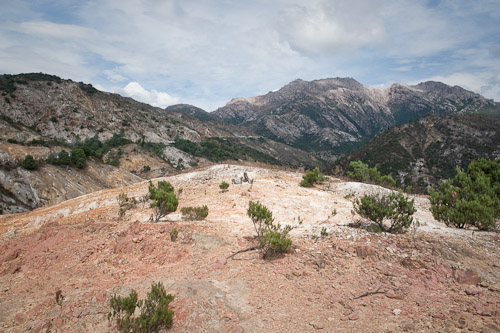 Tasmania’s Queenstown
Left behind by 19th and 20th Century industrial miners
This is south of the Tarkine
Tasmania’s Queenstown
Left behind by 19th and 20th Century industrial miners
This is south of the Tarkine
.
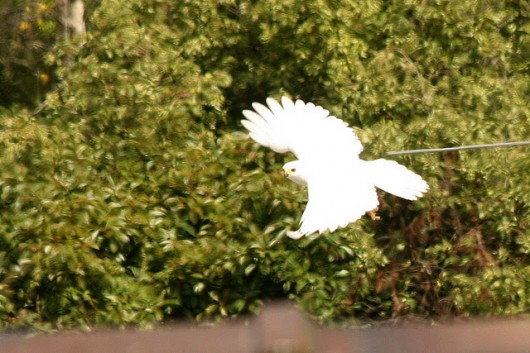 Grey Goshawk spreading its wings in flight
Grey Goshawk spreading its wings in flight
.
Tags: Accipiter novaehollandiae, Arthur River, Beacon Hill Resources, Grey Goshawk, Mount Lyell, Pieman River, Savage River Mine, Shree Minerals, Tarkine National Coalition, Tarkine wilderness, Tasmania, Tasmania Magnesite, Venture Minerals, World Heritage listing
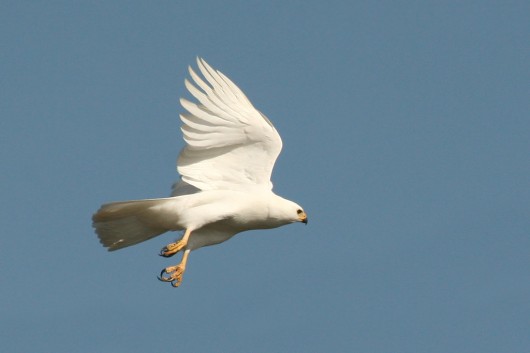
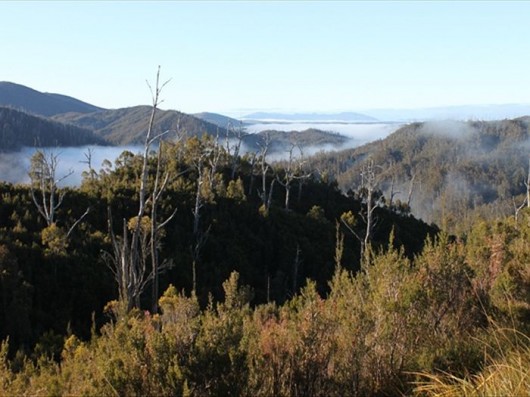
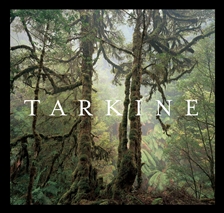










I was going for a short walk near my house today in Lalla, Tasmania (near Lilydale) and a strange white bird flew closely over my head. I thought to myself, ‘that looks like a Hawke, but it’s white – it certainly aint no seagull’. I jumped on the net only to find that such a bird actually does exist and I’m so happy to have seen it.
There was one flying around West Hobart on the weekend. A beautiful bird.
Having coffee on our patio this morning 20 -June 2015. A fully white bird of prey landed on our stone fence. Looked it up on the net. A white/ grey goshawk. Are they comes in qld Australia.?
I saw one flying overhead in suburban Kingston, Tasmania this morning. Gorgeous!
I saw one this morning flying near my house in Penguin in Tasmania. At first I thought it was a white cockatoo until I saw it dive down and pick up it’s prey that it had been hunting. I was in awe of it’s speed and precision. The prey looked like a large rat or baby rabbit; whatever it was, it didn’t stand a chance.
I’ve seen presumably the same white goshawk three times around my house in West Launceston. I wasn’t sure what it was until it landed on my neighbour’s roof and it was unmistakable.
Had one in our garden in Blackstone Heights with a kill this morning. Just magnificent
I have been watching a pair of these magnificent, spell binding, snow white raptors for the last two weeks during my stay in Tasmania. I just cannot believe that gross human greed wishes to destroy their habitat and their very existence. Tin mining or one of the worlds most precious birds? My stay as a visitor on Tasmania for two weeks cost me more than ten thousand dollars. Surely these natural habitats are worth protecting for the tourist dollar, one that fosters the natural beauty of our planet rather than it’s destruction. Future generations will prosper if we do. Just what are our children going to do with an impoverished and destroyed planet while a handfull of individual old timers get even more rich. You cannot take it to the grave, what’s the point. Time to think big and put greed aside to let all benefit from this great country now and into the future. If anything I think there is still great potential for eco-tourism on Tasmania. Let’s not waste it.
Just had one landing in our trees in Forest NW tasmania. Beautiful bird.